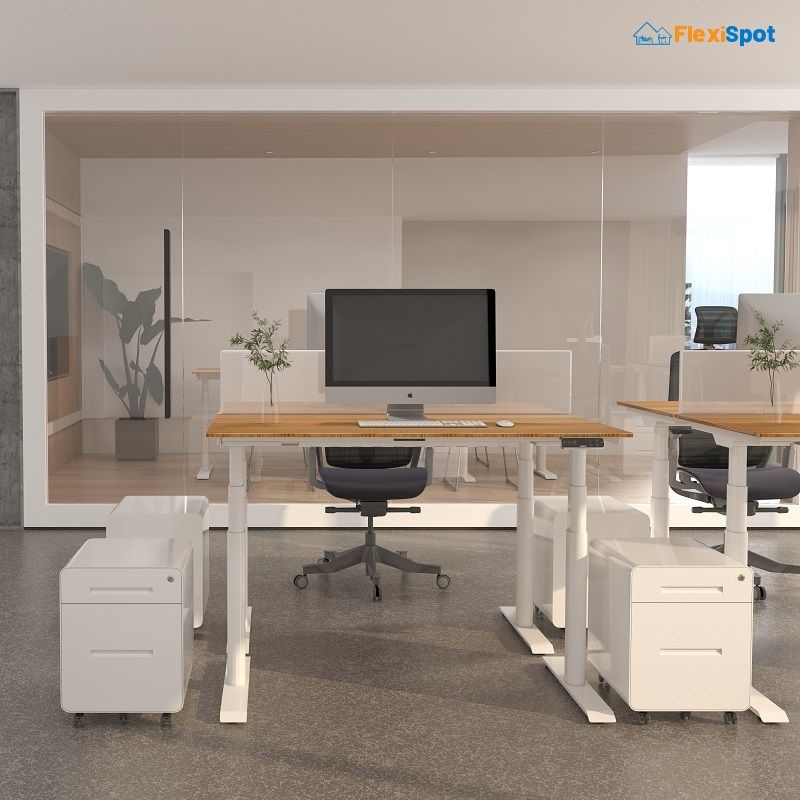The BYOD concept is simple enough in theory - office workers use their own personal laptops and mobile devices for work purposes. This practice has the potential to save businesses money on upfront purchase costs and also adds a degree of flexibility and comfort for employees as they get to use devices they are already familiar with.
However, things can get complicated when BYOD is actually implemented. Cyber security, data protection, and compliance with various regulations are just some of the concerns that need to be addressed. For large organizations with IT departments, this can be less of a problem. They can take a proactive role in the implementation process.
Smaller organizations may not have the same resources and may need to outsource these tasks.
But despite all the potential complications, BYOD has already caused enough permanent disruptions in the digital environment. Therefore, the proposition for small companies is not "Should we?" The right question is, "How do we get it right the first time around?"
All the same, it's essential to consider all the potential pitfalls of BYOD before taking the plunge. Otherwise, you may end up with more headaches than savings. So, let’s not waste time and get into the nitty-gritty of enacting a bulletproof BYOD policy for your SME or start-up.
What is a Bring Your Own Device (BYOD) Policy?
A Bring Your Own Device (BYOD) policy is a company policy that allows employees to use their own personal devices for work purposes and use them to access organizational networks and data. This can include laptops, smartphones, tablets, and other electronic devices. The policy will outline what is expected of the employee in terms of security and confidentiality, as well as any limitations on what devices can be used.
What’s the Key Driver behind BYOD Implementation?
There's no doubt that the rise of BYOD policies in the workplace is largely due to the influx of millennials and Gen-Xers into the workforce. These generations are much more comfortable with using laptops and mobile devices for work tasks, and they're also more open to blending their social and professional lives. However, it's worth noting that many baby boomer CEOs also thought about BYOD during their careers. But ultimately, these two generations have served as a catalyst for change.
The Advantages of BYOD
BYOD implementation can be a massive undertaking, but it can also bring a number of benefits to an organization, such as:
It is Cost Effective
Perhaps the most obvious way is that it can reduce the need for expensive office hardware and equipment. If employees are using their own devices, then the company doesn't need to provide them with laptops, tablets, or smartphones. BYOD can also save on costs associated with managing and maintaining office hardware and equipment. If employees are responsible for their own devices, then the company doesn't need to worry about repairing or replacing them. In addition, since the employee is using a device they are already familiar with, there is less training required and less time spent on troubleshooting.
Slick On-boarding
It can help you onboard new employees, more quickly and easily.
When new employees come to work, one of the first things they need to do is get set up with all the tools and resources they need to do their job. With a BYOD policy in place, they can bypass this process entirely. They can simply log in to their personal device, and they're ready to go. This not only saves them time but also makes them feel more welcome and comfortable in their new environment.
Additional Technical Flexibility
Let’s face it, hybrid and remote work are the new normal. BYOD allows employees to work when, where, and how they like to dispense with tasks – within reasonable bounds. This dispenses with the need for traditional office space and allows employees to be more productive. In addition, BYOD policies promote job satisfaction by giving employees the freedom to work in their own preferred environment. Whether that’s at home in their pajamas or out and about at a coffee shop, BYOD provides the flexibility that today’s workers crave.
Keeping Up-to-Date with Business Essential Apps and Devices
With the burden of updating devices and apps passing to the employees, they are likely to stay current in order to avoid working with outdated tech. In addition, BYOD can allow greater choice in device type, as employees are free to choose the device that best suits their needs.
The Disadvantages of BYOD
While this arrangement has some advantages, there are also several disadvantages that should be considered before allowing employees to bring their own devices to work.
May Erode Employee Privacy
IT security and compliance initiatives call for the proactive monitoring of software and hardware usage. This, at times, may include personal emails, browsing histories, and other items you may want to keep secret. Thus, it blurs the lines between your personal and business life.
Complicates IT and Tech Support
Identical IT devices are easy to maintain and upgrade. But, dealing with laptops with different specs and operating systems complicates such activities for IT support teams.
Malware
Having different devices creates many endpoints that Malware can exploit. Some employees may access public Wi-Fi and other unsecured networks that can expose your organization's network to cyber-attacks when they come to work and log in.
Increased Distraction
Employees using their own devices for work tasks make it easy for them to get sidetracked with personal activities like checking personal emails or browsing social media.
8 Ways to Mitigate the Risks of BYOD Implementation
Having many devices and digital networks connecting to your IT infrastructure is a liability to your cyber-security and compliance initiatives. Here are some preemptive measures to shore up your employees' device security.
1. Create A Solid Off-Boarding Plan
Many BYOD policies fail to factor in staff turnover. And some employees may have ulterior motives for all the passwords and privileged access they have to your network. So, it helps to have an off-boarding plan that can erase security credentials and other sensitive pieces of data from their personal devices. Once this is executed, the ‘targeted employees’ can no longer access your networks, apps, and business-essential data.
2. Embed MDM ( Mobile Device Management) Tools
MDM platforms offer an excellent means to ensure your digital infrastructure remains safe when accessed via many endpoints. They can be delivered through your server, dedicated applications, or the cloud. It also offers a way to separate corporate data from your employee's personal data.
3. Implement Application Readiness Automation
BYOD can create a number of challenges for IT, including managing different devices and operating systems, ensuring security, and providing support. Application readiness automation helps to address these challenges by automating the process of making applications compatible with different devices and operating systems. This allows IT to focus on more strategic tasks, such as developing new features and applications. In addition, application readiness automation can help to improve security by reducing the need for manual configuration and testing.
4. Use the Latest Anti-Malware Tools
Hackers and other malicious cyber-attackers constantly update their tricks. So, using the same old strategies to secure your network is like handing them the initiative. You can deny them this by acquiring the most up-to-date anti-malware software and ensuring they install it on all the devices that access your organization's sensitive data.
5. Create An Effective Device Loss Strategy
Laptops, smartphones, and other mobile devices can be lost or stolen. It’s impossible to stop or anticipate the exact timing of such eventualities. But, you can still have an effective plan for when or if that happens. One of the best ways to do so is to install reliable data encryption tools or apps that can wipe sensitive data in such unlikely events.
6. Regular Data Backups
Data loss through lost or compromised devices is unpredictable. This can be detrimental if you cannot recover the lost data parcels. Regular data backup secures you from such eventualities and is key to enhancing organization-wide compliance and data protection.
7. Include a Reimbursement Policy
In some cases, your organization may have a legal requirement to reimburse you for costs incurred through your task. This may include cell and data plans or even some kind of insurance against loss or theft of BYOD devices.
It may be prudent to consider whether you may need reimbursement, the cost, and how your organization proceeds in such cases. This can motivate your employees to invest in the best technology in the market, thereby enhancing their productivity.
8. Drill Your Employees on the Intricacies of Your Policy
Many BYOD policies take all the hardware and software considerations into account. But, often forget the most integral part: the human ware aspect. This leaves room for your employees to use their devices as they please.
Extensive training is the best way to secure your organization against cyber-security threats or catastrophic data breaches. Such workshops can set clear guidelines on acceptable use, risk aversion, and responses in case of undesired eventualities.
Create a Comfortable Work Environment for Your BYOD Policy
If you want your BYOD policy to be successful, you need to create a comfortable work environment for your employees. That means more than just providing a few extra chargers and offering to pay for data plans. It means taking into account ergonomics of the work area
Here are a few ideas to help you with this:
Offer Proper Storage
If your workplace allows employees to bring their own devices (BYOD), it's important to provide proper storage for those devices. Leaving them out in the open can make them susceptible to damage or theft, and it can also create a messy and cluttered work environment. One option is to provide dedicated storage cabinets or lockers for BYOD devices. This gives employees a secure place to store their devices when they're not using them and helps keep the work area tidy.
Add Some Standing Desks
Standing desks have a number of benefits. They can help to improve posture and reduce back pain, and they can also help to increase energy levels and focus. In addition, standing desks can help to promote collaboration by encouraging employees to move around and interact with each other.
Include Ergonomic Seats
Standing for too long can also be detrimental, especially to the veins in your legs. It tightens your leg muscles, which can lead to vein thrombosis. You can add some anti-fatigue mats to soften the floor and relieve pressure on your legs.
Ergonomic office chairs are designed to relieve pressure on the spine, shoulders, and back muscles, and they can help to improve posture and reduce fatigue. They’re an investment that will pay off in terms of employee productivity and satisfaction.
To Sum It Up
It's no secret that Bring Your Own Device (BYOD) policies can present some challenges for businesses. After all, when employees are using their own devices for work purposes, it can be difficult to maintain control over data and ensure compliance with industry regulations.
However, BYOD doesn't have to be a headache for businesses - if you approach it the right way, you can actually reap some significant benefits. Implementing a successful BYOD policy requires careful planning and execution, but it's definitely doable. And once you've got everything up and running, you'll be able to take advantage of increased productivity, decreased IT costs, and enhanced security.
Hopefully, these few tips will incentivize your drive to embrace the tech disruptions that shape the future of how we work.




